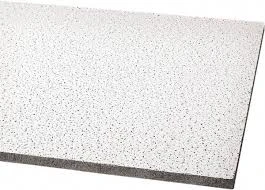Dec . 12, 2024 12:21 Back to list
drop ceiling grid materials
Understanding Drop Ceiling Grid Materials An Essential Guide
When it comes to interior design and building construction, the choice of materials can significantly affect both aesthetics and functionality. One crucial element often overlooked is the drop ceiling grid, a framework that supports ceiling tiles and contributes significantly to a room's acoustics, lighting, and overall appearance. In this article, we will explore the various materials used in drop ceiling grids, their benefits, and considerations for selection.
What is a Drop Ceiling Grid?
A drop ceiling, also known as a suspended ceiling, consists of a grid framework that is hung from the structural ceiling above. This framework supports lightweight ceiling tiles, offering an attractive way to conceal electrical wiring, HVAC ducts, and plumbing. The grid system comprises main runners, cross tees, and wall angles, providing a versatile structure that can be customized to fit various room sizes and shapes.
Materials Used in Drop Ceiling Grids
Drop ceiling grids are primarily made from several materials, each offering unique properties and advantages
1. Metal Galvanized steel and aluminum are the most common materials used for drop ceiling grids. Metal grids are known for their durability and strength, making them an excellent choice for commercial spaces that require high performance. They resist warping, are easy to maintain, and can withstand environmental stresses better than other materials.
2. Vinyl Vinyl grids are a lightweight alternative to metal, offering easy installation and maintenance. They are often used in residential settings or areas with lower foot traffic. Vinyl grids are resistant to moisture and are available in various colors, allowing for design flexibility. However, when compared to metal, they may lack certain structural advantages.
3. Wood For those seeking a more aesthetic appeal, wood ceiling grids are an option. They can add warmth and elegance to a room, making them popular in residential applications and high-end commercial settings. However, wooden grids may require more maintenance and can be prone to warping or damage from humidity.
drop ceiling grid materials

4. Composite Materials Some manufacturers are now offering composite grid systems that combine different materials for enhanced performance. These grids may integrate the strength of metal with the aesthetics of wood or vinyl, providing a balanced solution that meets various functional and design needs.
Benefits of Drop Ceiling Grids
The selection of the right drop ceiling grid material can drastically influence a space's functionality and aesthetic appeal. Some notable benefits include
- Acoustics A well-designed drop ceiling grid can help absorb sound, reducing noise levels in busy environments. This is especially useful in offices, schools, and hospitals where concentration and privacy are essential.
- Accessibility The suspended nature of drop ceilings allows for easy access to overhead utilities. This accessibility makes maintenance and modifications more convenient, saving time and reducing costs in the long run.
- Design Flexibility With a wide variety of ceiling tiles available, including those that are decorative or acoustic-enhanced, drop ceiling grids provide endless design possibilities. This flexibility allows homeowners and designers to create unique, functional spaces.
- Cost-Effectiveness Compared to traditional ceiling options, drop ceilings can be a more economical choice, particularly in commercial applications. They require fewer materials and can often be installed quicker, reducing labor costs.
Conclusion
Choosing the right drop ceiling grid material is essential for achieving a blend of aesthetics, acoustics, and functionality. Whether opting for the durability of metal, the lightness of vinyl, or the warmth of wood, each material brings its unique benefits. By understanding the properties and advantages of each type, individuals can make informed decisions that enhance their spaces while meeting practical needs. Ultimately, investing time in selecting the right drop ceiling grid material pays off in creating environments that are both visually appealing and functionally efficient.
-
Durable Ceiling T Grid Systems | Easy InstallationNewsAug.29,2025
-
PVC Gypsum Ceiling: Durable, Laminated Tiles for Modern SpacesNewsAug.28,2025
-
Pvc Gypsum Ceiling Is DurableNewsAug.21,2025
-
Mineral Fiber Board Is DurableNewsAug.21,2025
-
Ceiling Tile Clip Reusable DesignNewsAug.21,2025
-
Ceiling T Grid Modular DesignNewsAug.21,2025







